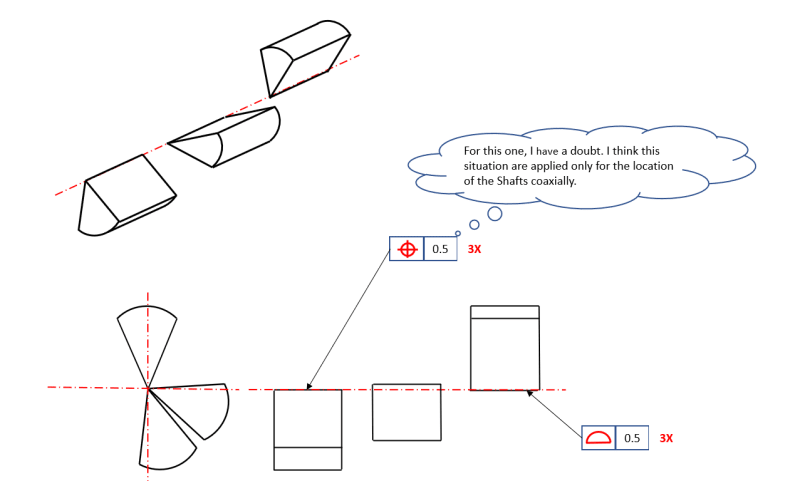-
1
- #1
nry67
Industrial
- May 30, 2011
- 33
Let's assume that we have 3 same parts (pie form) should be placed on upper level with each vertex of angles on the same axis but not at the same depth.
Can you help me to show the better way to define that on a drawing.
I do 2 exemple, perhaps you have a better than me. Of course I've voluntary abstract the rule of implied.

Can you help me to show the better way to define that on a drawing.
I do 2 exemple, perhaps you have a better than me. Of course I've voluntary abstract the rule of implied.

